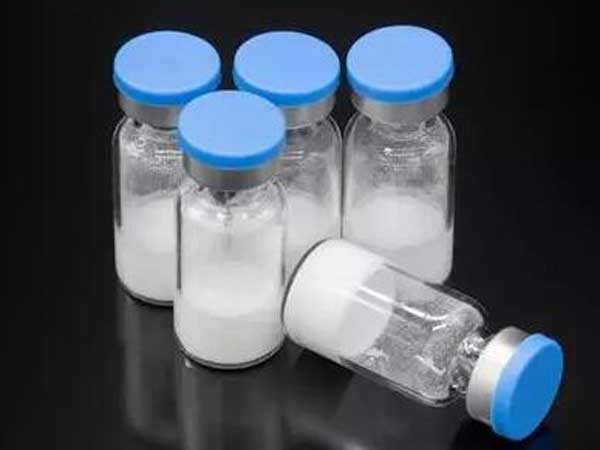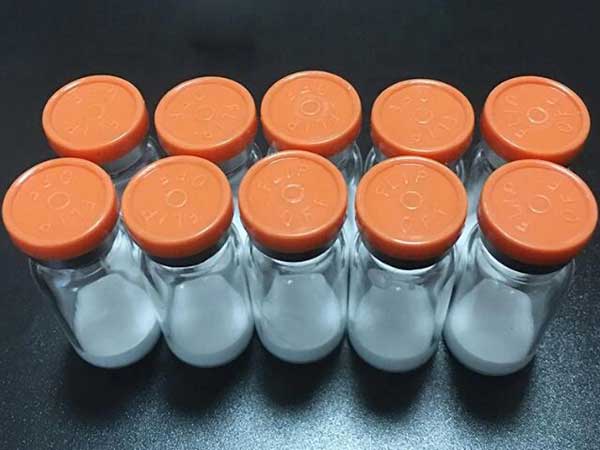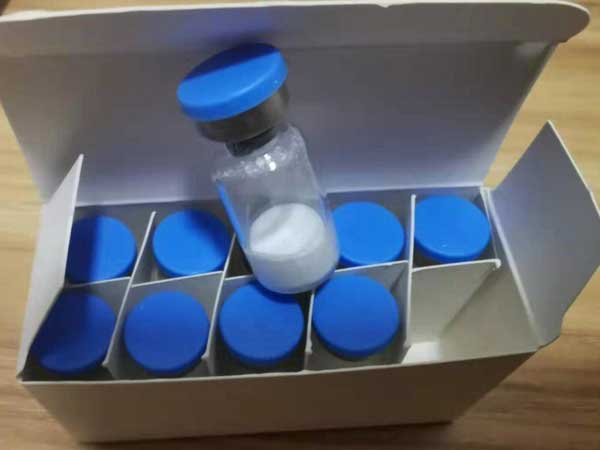- Product Name: IGF-1 DES (1-3)
- Appearance: White lyophilized powder
- Purity: 99%min
- Specification: 10iu, 100iu
- CAS No.: 67763-96-6
What Is IGF-1 DES (1-3)
DES (1-3) IGF-1 is a truncated variant of IGF-1, and the tripeptide Gly-Pro-Glu does not exist at the N-terminus. It is extracted from human brain, bovine colostrum and pig uterus, and is the prototype of a parent compound called insulin-like growth factor IGF-1. Its efficacy in stimulating the hypertrophy and proliferation of cultured cells is about 10 times higher than that of IGF-1. This is due to the greatly reduced binding to IGF-binding protein, which is caused by the absence of glutamate at position 3.
What Are Advantges of IGF-1 DES(1-3)
- Promote protein synthesis in the body.
- Regulates fat storage and directs its use for energy production. This leads to a significant fat loss.
- Promote the positive effect of metabolism, increase lean body mass and reduce fat.
- Increased the regeneration characteristics of human nerve tissue.
- Up-regulate antioxidant effect and ligament strength.
- It promotes the proliferation of muscle cells, resulting in fuller muscle tissue.
- Improve athletic performance.
- Improve muscle recovery after exercise.
- Reduce recovery time after injury.
- Optimal IGF-1 and growth hormone levels are essential for bone development during childhood and throughout adulthood.
More About IGF-1 DES(1-3)
IGF-1(insulin-like growth factors), also known as growth hormone mediators, is an endocrine hormone produced in the liver. It is also an active protein peptide substance necessary for the physiological action of growth hormone. In the presence of human growth hormone, the release of this hormone is increased. Many cells in human muscles are equipped with cell receptors with high affinity for insulin-like growth factors. This makes this hormone one of the best growth hormones and a general cell growth promoter. It works by targeting different specific tissues, and in the process of more autocrine cell communication, it promotes cell division.
Using IGF-1 will increase weight, not because of water weight. All your weight gain is caused by actual muscle growth, which is a long-term effect. Compared to steroids that overweight and often cause undesirable side effects, you won’t get 10 pounds of weight from insulin-like growth factors, but you will get solid muscle gain every one to two weeks, including actual heavy muscles. The most important feature of IGF-1 is its ability to cause hyperplasia in the human body. This hyperplasia indicates the growth and development of new cells in the muscle. Generally, at a normal genetic level, you will do more in muscle density and size.
However, IGF-1 has a short half-life, and it is quickly destroyed by the body. This is the main reason why IGF-1 was modified to produce the amino acid analog IGF-1 LR3 with a longer half-life. The half-life of IGF-1 LR3 can reach 20-30 hours. DES IGF-1 is another variant of IGF-1, which is ten times more potent than IGF-1. Its half-life is about 20 to 30 minutes, but this does not reduce its efficacy. The administration of DES IGF-1 should only be done where you want muscle growth. DES IGF-1 has a higher ability to stimulate muscle growth than IGF-1 LR3. In conclusion, DES IGF-1 works best when used for site injection rather than overall muscle growth.
In addition to these functions, DES IGF-1 can also bind to receptors that have been deformed by lactic acid in cells. The production of lactic acid increases during training and strenuous exercise. This feature of DES IGF-1 allows it to attach to receptors for tissue growth mutations that can signal even during training activities. Compared with IGF-1 LR3, DES can be used more frequently and lasts longer.
IGF-1 DES (1-3) is a highly effective growth-inducing protein. According to records, the compound triggered a net weight gain of 15% within four weeks in young adult mice. However, when high potency is applied to animal subjects by in vitro administration, its high potency is reduced. Even in this case, there is still significant cell proliferation in the tissues located in the intestine. After this compound was injected into the muscle tissue of an animal sample, it triggered an increase in the size and physical strength of the experimental animal. Human Des(1-3) IGF-1 is more effective than IGF-1. This increased efficacy is due to the reduced binding of human Des(1-3) IGF-1 to most IGF-binding proteins that normally inhibit the biological activity of IGF-1. Des(1-3) IGF-1 binds to type 1 IGF receptor with similar affinity to wild-type IGF-1.
Although freeze-dried powder is stable at room temperature for 3 weeks, it should be stored in a dry environment below -18°C. After reconstitution, IGF-1 DES(1-3) should be stored at 4℃ for 2-7 days and at -18℃ for future use. It is recommended to add carrier protein (0.1% HSA or BSA) for a long time. Please prevent freeze-thaw cycles.


